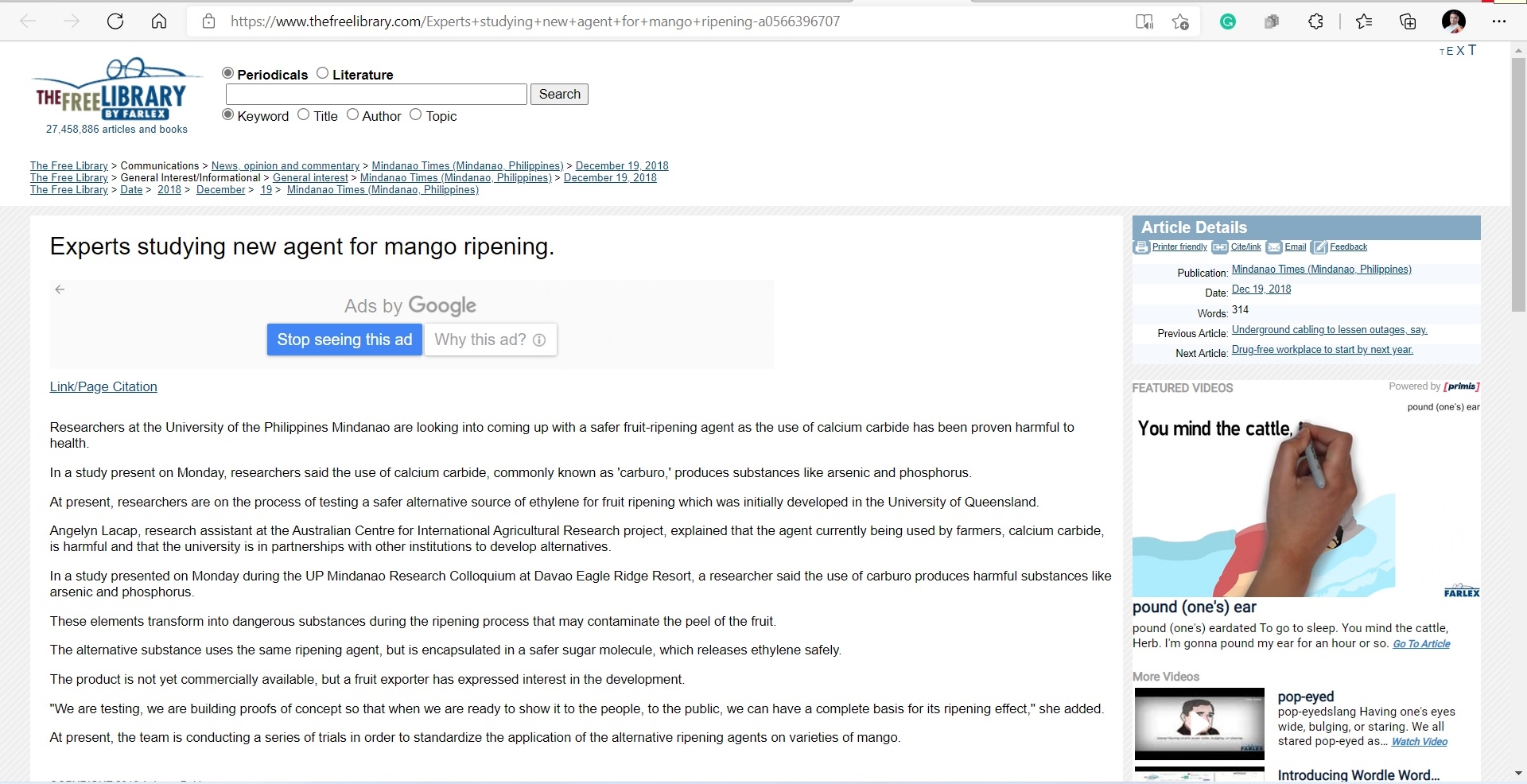UP Mindanao-Landcare-PCAARRD LIFE Program: Site Facilitators as Agents of Change
Mindanao Times news article on website

(source: https://www.thefreelibrary.com/Experts+studying+new+agent+for+mango+ripening-a0566396707)
SAMAL ISLAND AND ITS PEOPLE: NARRATIVES OF POWER IN THE LANDSCAPES OF A NEW CITY
Abstract
TOWARDS A MODIFIED BURKEAN APPROACH TO THE RHETORIC OF THE SOUTHERN PHILIPPINES COUNCIL FOR PEACE AND DEVELOPMENT (SPCPD)
Abstract
This study was conducted in view of the significance of the Southern Philippines Council for Peace and Development (SPCPD) not only among the Mindanaoans, but to the Filipino people as well. The study aimed at describing the rhetorical process using the Burkean approach and to determine the major issues reflected in the rhetoric. To reach this goal, a description of the rhetoric using the Dramatistic pentad with its five elements— act, scene, agent, agency and purpos—was deemed necessary. It was found out that Kenneth Burke’s dramatism or pentad was useful in analyzing the whos, whats, whys and hows in the rhetorical process.
Although Kenneth Burke’s dramatism or pentad was useful in analyzing the rhetorical process, there was a need to complement the approach with discourse analysis to be able to show the interpersonal relationship that was observed.
Since the study focussed on the Senate deliberation on the establishment of SPCPD, the rhetoric was analyzed during the height of the issue, the year 1996: focusing from the release of the draft of the Executive Order in August to the signing of the final Executive Order 371 in September, establishing the SPCPD, ZOPAD and the Consultative Assembly up to the immediate aftermath of the EO 371 in October to December. The analysis concentrated on this particular timeframe. Hence, the recent developments in the Mindanao situation was not included in this study.
.
More Articles...
- THE ETHICAL CHOICES OF GRADUATE MANAGEMENT STUDENTS
- SHELTER FOR THE URBAN POOR IN SANPASADA
- PIONEERING IN THE COTABATO FRONTIER:THE KORONADAL VALLEY PROJECT DURING THE PREWAR YEARS
- PERCEIVED EFFECTS OF EDUCATION AMONG FEMALE MEMBERS OF THE ATA MANABO, MANDAYA AND MANSAKA COMMUNITIES IN THE DAVAO REGION
